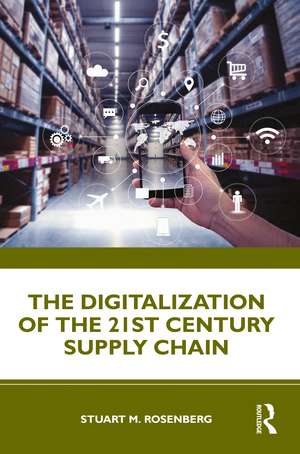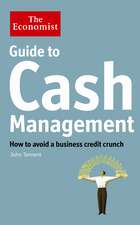The Digitalization of the 21st Century Supply Chain
Autor Stuart Rosenbergen Limba Engleză Hardback – 10 noi 2020
The goal of this book is to gain a clear picture of the current status and future challenges with regard to the digitalization of the supply chain - from the perspective of the suppliers, the manufacturers, and the customers. They were the target groups of the book.
Digitization has touched upon all aspects of businesses, including supply chains. Technologies such as RFID, GPS, and sensors have enabled organizations to transform their existing hybrid (combination of paper-based and IT-supported processes) supply chain structures into more f lexible, open, agile, and collaborative digital models. Unlike hybrid supply chain models, which have resulted in rigid organizational structures, unobtainable data, and disjointed relationships with partners, digital supply chains enable business process automation, organizational flexibility, and digital management of corporate assets.
In order to reap maximum benefits from digital supply chain models, it is important that companies internalize it as an integral part of the overall business model and organizational structure. Localized disconnected projects and silo-based operations pose a serious threat to competitiveness in an increasingly digital world.
The technologies discussed in this text - artificial intelligence, 3D printing, Internet of things, etc. - are beginning to come together to help digitize, automate, integrate, and improve the global supply chains. It's certainly an exciting and challenging time for both new supply chain professionals and long-time supply chain professionals.
Preț: 473.42 lei
Nou
90.59€ • 93.46$ • 75.60£
Carte tipărită la comandă
Livrare economică 27 martie-10 aprilie
Specificații
ISBN-10: 0367516780
Pagini: 264
Ilustrații: 2 Halftones, black and white
Dimensiuni: 156 x 234 x 16 mm
Greutate: 0.55 kg
Ediția:1
Editura: Taylor & Francis
Colecția Routledge
Locul publicării:Oxford, United Kingdom
Public țintă
Adult education, Postgraduate, Professional, and Professional Practice & DevelopmentCuprins
Notă biografică
Descriere
The goal of this book is to gain a clear picture of the current status and future challenges with regard to the digitalization of the supply chain - from the perspective of the suppliers, the manufacturers, and the customers. They were the target groups of the book.
Digitization has touched upon all aspects of businesses, including supply chains. Technologies such as RFID, GPS, and sensors have enabled organizations to transform their existing hybrid (combination of paper-based and IT-supported processes) supply chain structures into more f lexible, open, agile, and collaborative digital models. Unlike hybrid supply chain models, which have resulted in rigid organizational structures, unobtainable data, and disjointed relationships with partners, digital supply chains enable business process automation, organizational flexibility, and digital management of corporate assets.
In order to reap maximum benefits from digital supply chain models, it is important that companies internalize it as an integral part of the overall business model and organizational structure. Localized disconnected projects and silo-based operations pose a serious threat to competitiveness in an increasingly digital world.
The technologies discussed in this text - artificial intelligence, 3D printing, Internet of things, etc. - are beginning to come together to help digitize, automate, integrate, and improve the global supply chains. It's certainly an exciting and challenging time for both new supply chain professionals and long-time supply chain professionals.





















